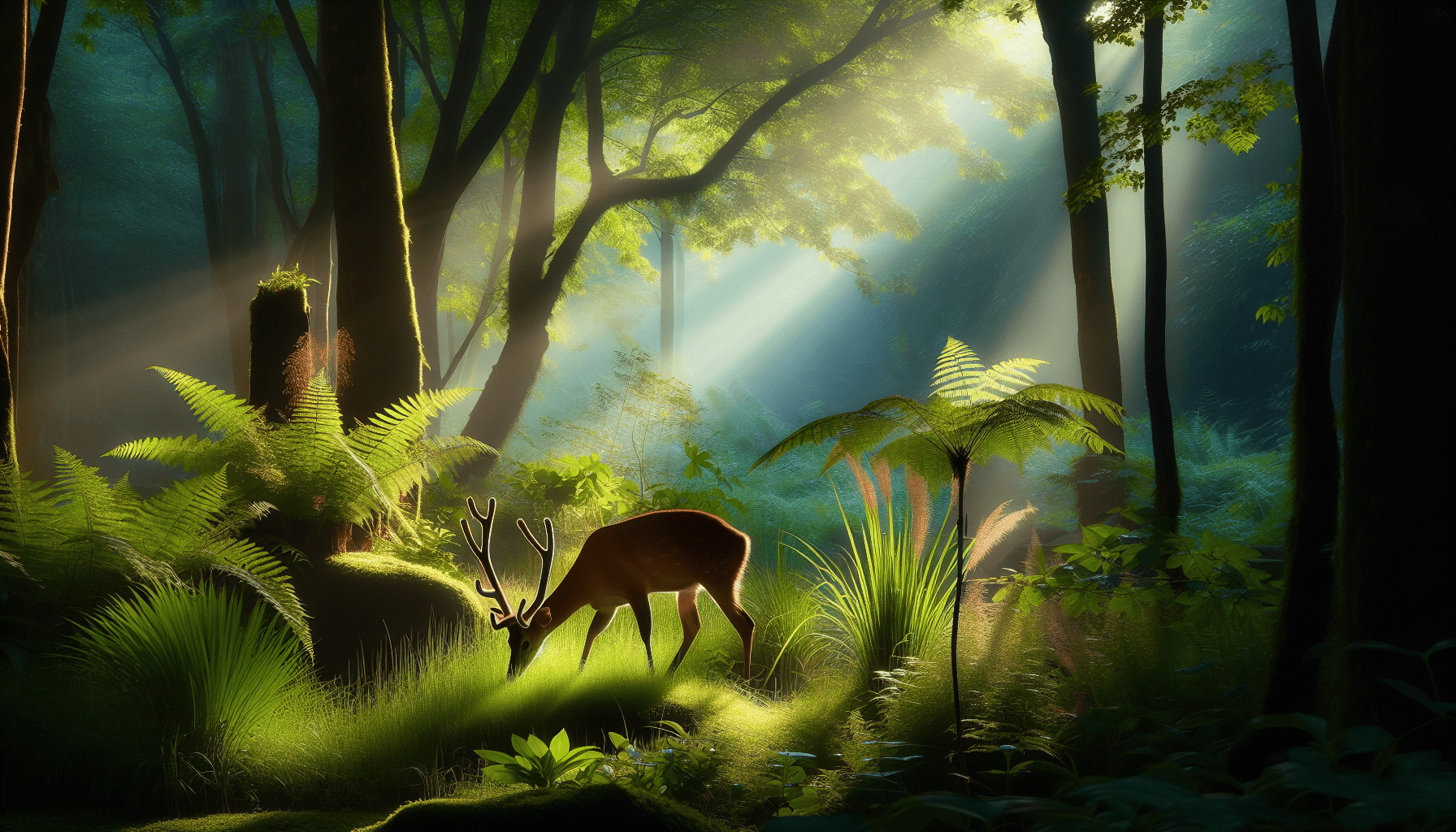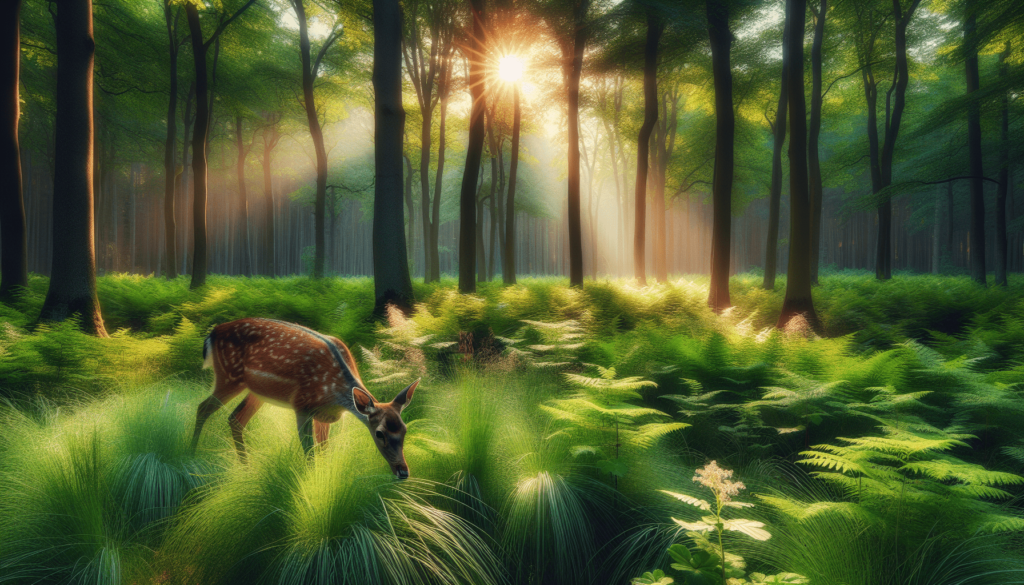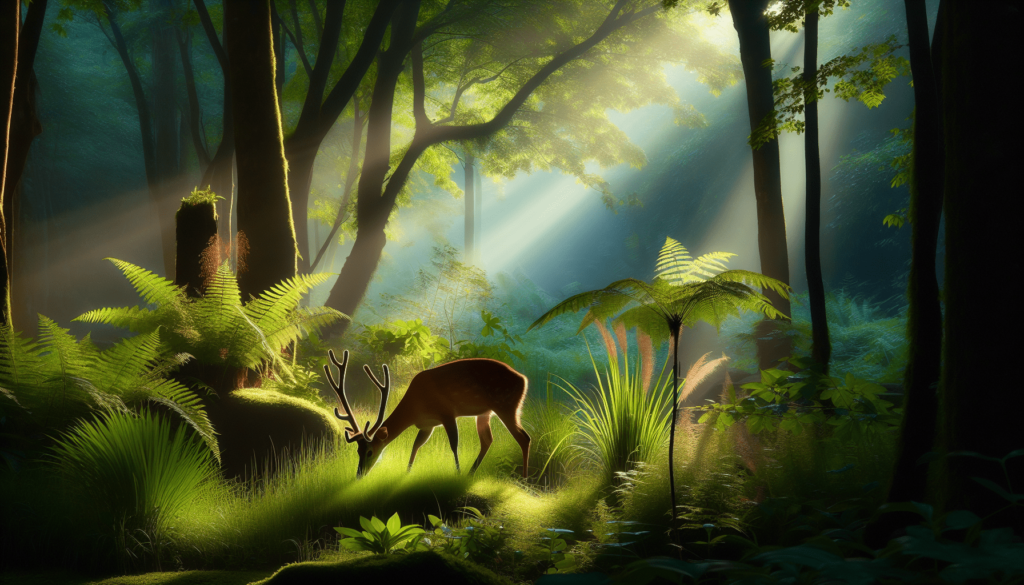
What if you could unlock the secrets of deer feeding habits to enhance your wildlife observation experiences? Understanding these remarkable creatures and their preferences can truly elevate your time spent in nature, whether you’re an avid hunter, a wildlife photographer, or simply a nature enthusiast. Let’s take a closer look at the world of deer feeding habits, their dietary preferences, patterns, and what they tell us about maintaining a healthy ecosystem.
The Basics of Deer Feeding
Deer are herbivores, which means they consume plants. Their feeding habits are influenced by several factors including the availability of food, the time of year, and their physical needs. By grasping these basics, you can appreciate why deer choose certain foods over others depending on the season and their health requirements.
Types of Deer
Understanding the various species of deer can enrich your knowledge significantly. The most common types you might encounter include:
- White-tailed Deer: Found primarily in North America, they are known for their adaptability and have a varied diet.
- Mule Deer: Recognized by their distinctive large ears, these deer usually reside in western regions.
- Elk: While larger than typical deer, elk share similar dietary habits and preferences.
Each species has unique preferences, and knowing these can guide you in identifying what they may be feeding on in your area.
Dietary Preferences
Now that you know a bit about the types of deer, let’s discuss what they prefer to eat. Deer have a diverse diet, often changing based on seasonal availability.
Seasonal Feeding Patterns
Spring
During spring, the world comes alive, and so does the deer diet. With new growth sprouting, deer relish:
- Tender Green Leaves: Fresh foliage is abundant, and deer favor new shoots.
- Wildflowers: These are not just beautiful; they’re also a source of vital nutrients.
Summer
Summer feeding habits tend to focus on:
- Fruits and Berries: Deer are particularly drawn to sweet fruits like apples and berries.
- Grasses: During the warmer months, a variety of grasses become a staple.
Fall
Autumn sees a shift in priorities as deer prepare for winter:
- Acorns and Nuts: Hard mast such as acorns provide fat reserves for the cold months ahead.
- Roots and Tubers: These underground plant parts offer nourishment when other food sources diminish.
Winter
In winter, food becomes scarce, and deer adapt by eating:
- Woody Browse: This includes twigs and small branches of trees and shrubs.
- Evergreen Foliage: In some areas, deer may rely on conifers and their needles.
Nutritional Needs
Deer need a balanced diet to thrive, encompassing various nutrients. Here’s a look at what makes up their ideal diet:
| Nutrient | Role in Diet | Sources |
|---|---|---|
| Protein | Crucial for growth and repair | Legumes, clover, alfalfa |
| Carbohydrates | Energy source for daily activities | Roots, fruits, grains |
| Fats | Energy storage | Acorns, seeds |
| Minerals | Bone development and health | Soil, natural vegetation |
| Vitamins | Immune system function | Fresh greens, fruits |
A well-rounded diet is vital, especially for pregnant or lactating females, growing fawns, and for deer facing harsh environmental conditions.

Influencing Factors of Feeding Behavior
The behavior of deer while feeding is influenced by numerous factors. Understanding these influences can further deepen your connection with these majestic animals.
Environmental Factors
- Weather Conditions: Deer feed more actively during cooler temperatures and prefer overcast days for less exposure.
- Food Availability: In areas where food is abundant, deer will roam, while in lean seasons, they might restrict their territory to familiar feeding spots.
Social Structure
Deer are social animals, and social hierarchy often dictates access to food resources. Dominant individuals may have first choice at feeding locations, especially in groups.
Predation Risk
Deer are prey animals, so their awareness of predators greatly influences their feeding habits. They often feed in areas where they feel safest, such as near dense cover.
Feeding Locations
Where deer choose to feed can tell you a lot about their habitat preferences.
Preferred Habitats
Deer are known to frequent certain habitats, which include:
- Woodlands: Dense forests provide cover and a variety of forage.
- Fields and Meadows: Open spaces have grasses and wildflowers that attract deer.
- Riparian Zones: Areas near water sources are lush with vegetation and support diverse diets.
Knowing these habitats can help you locate deer during your outdoor adventures.
Feeding Strategies
Deer employ various strategies to optimize their foraging:
- Grazing: Consumes grasses and forbs while standing on the ground.
- Browsing: Feeding on leaves, twigs, and shrubs, often done by leaning or stretching their necks.
- Foraging in Groups: Social feeding can provide safety in numbers and opportunities to find more food.

Special Adaptations
Deer possess some unique adaptations that allow them to thrive in their environment. Recognizing these features will enhance your appreciation for their resilience.
Digestive System
Deer are ruminants, which means their digestive system is specially adapted to break down tough plant material. They have a four-chambered stomach, allowing them to better extract nutrients from fibrous plants.
Keen Senses
Deer have excellent senses that aid in foraging:
- Sense of Smell: This helps them identify food sources from long distances.
- Vision: While deer struggle with color perception, they excel at detecting movement, which protects them from predators.
- Hearing: Their acute sense of hearing allows them to perceive sounds that might signal danger and help locate food.
Observational Techniques
If you want to enhance your wildlife observation skills, understanding deer feeding behaviors can be key. Here are a few techniques you might find helpful.
Early Morning and Late Evening
Deer are crepuscular, meaning they are most active during dawn and dusk. Planning your observations during these times can increase your chances of spotting them.
Look for Signs of Feeding
Watch for:
- Nibbled Leaves: Examine bushes and trees for small bite marks.
- Tracks: Look for hoof prints that can lead you to feeding areas.
- Droppings: Fresh scat can point you to regions where deer have recently foraged.
Use Binoculars
A good pair of binoculars can allow you to observe deer from a distance without disturbing their natural behavior. This enhances your experience while ensuring their comfort.
Management Practices
Understanding deer feeding habits is also critical for effective wildlife management. Here’s how you can contribute to maintaining a balanced ecosystem.
Food Plot Establishment
If you’re involved in land management, consider establishing food plots. This encourages healthy deer populations and balances the ecosystem.
| Food Plot Type | Best For | Planting Recommendations |
|---|---|---|
| Legumes | High protein availability | Clover, soybeans |
| Grains | Energy-rich food source | Corn, oats |
| Brassicas | Winter forage | Turnips, rape |
Habitat Enhancement
Enhance natural habitats by planting native species that deer favor. This not only provides food but also helps increase the biodiversity of the area.
Monitoring Populations
Keep track of deer populations in your area. Tools like trail cameras can provide insight into feeding habits and population dynamics, helping maintain balance within the ecosystem.
The Role of Deer in Ecosystems
Deer play a crucial role in maintaining the health of ecosystems. Their feeding habits can influence plant communities, seed dispersal, and even the populations of other species.
Plant Control
By grazing and browsing, deer control the growth of certain plant species, preventing any one type from dominating the landscape. This contributes to a diverse and healthy habitat.
Seed Dispersal
As deer consume fruits and nuts, they disperse seeds through their droppings, promoting plant growth and contributing to the expansion of vegetation in an area.
Food Source for Predators
Deer also serve as a primary food source for many predators, such as wolves and coyotes, creating a balance within the predator-prey dynamics.
Conclusion
Understanding deer feeding habits is not just about appreciating these magnificent creatures; it’s about recognizing their critical role in the ecosystem. By learning the intricacies of their preferences and patterns, you enhance your experiences in nature, deepen your connection with wildlife, and contribute to conservation efforts in your area. Whether you observe deer from a distance or interact with land management, you are part of a larger narrative that supports biodiversity and ecological health. With each encounter, you create memories that resonate with the gentle whispers of the wild.
By taking the time to appreciate and learn about deer feeding habits, you invite a world of wonder and understanding that enriches your connections with nature. The next time you find yourself in the woods or a meadow, keep your eyes open and your heart attuned to the rhythm of deer feeding—there’s a whole beautiful story waiting to unfold.





